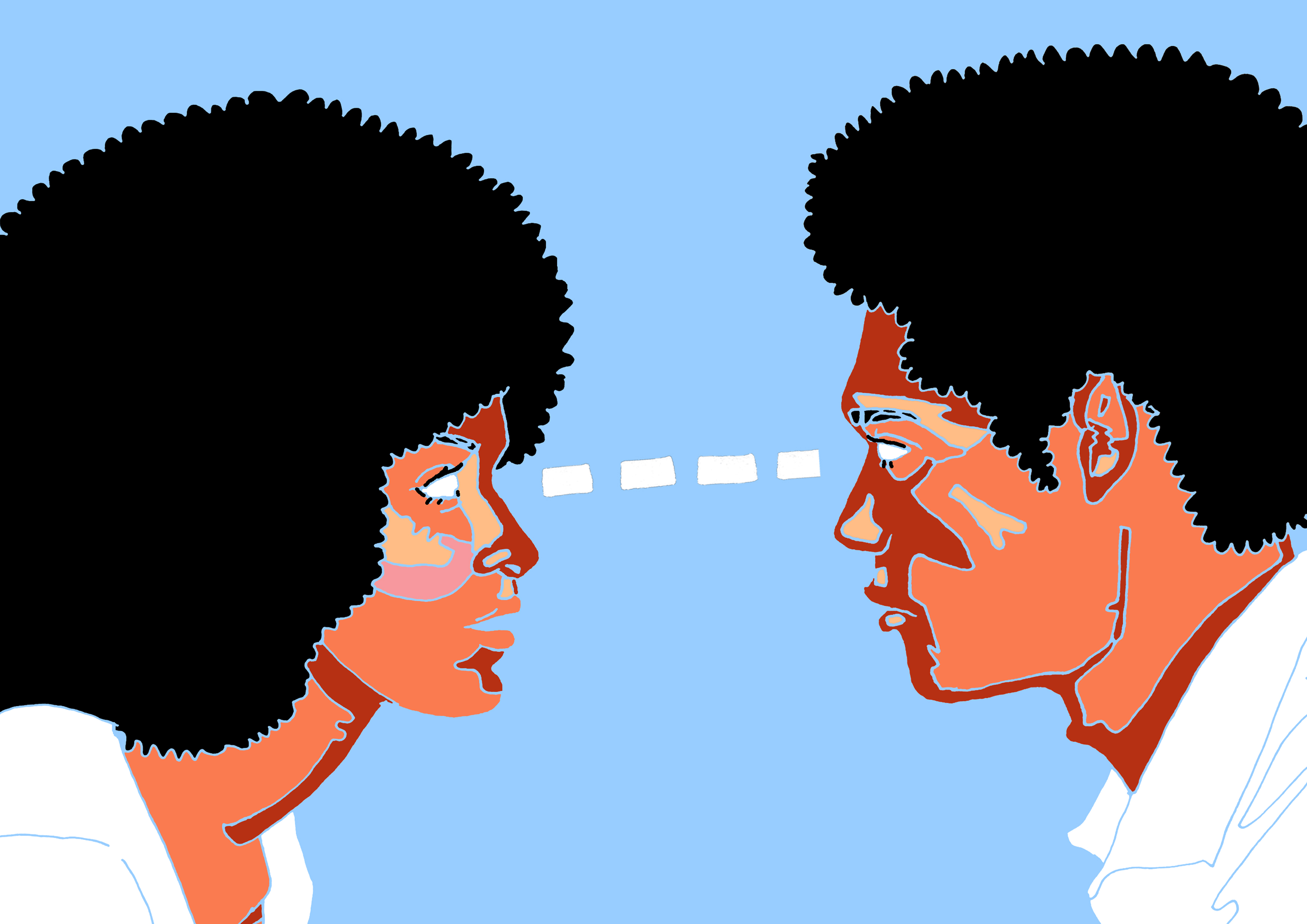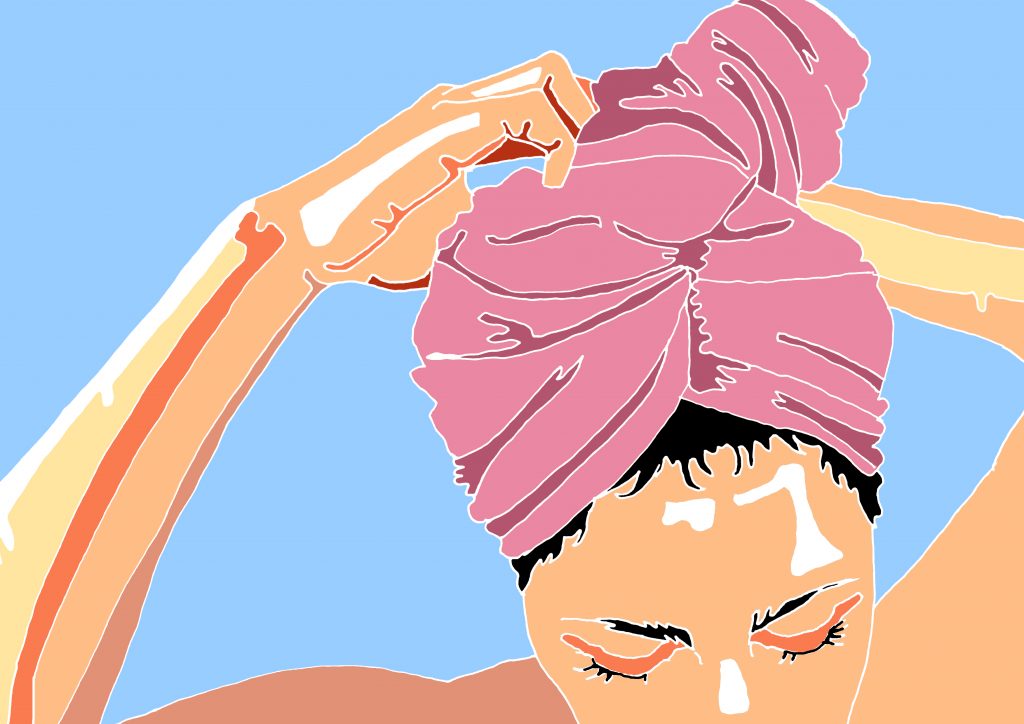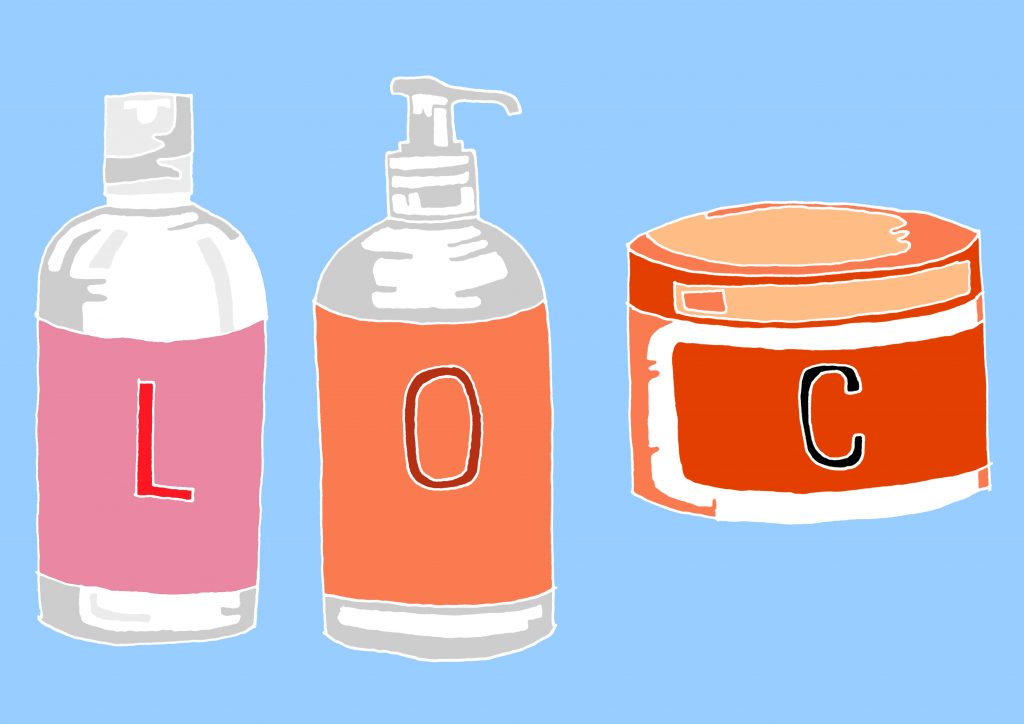
*glossary included at the end of article
When I think ‘Afro’, the terms ‘gravity-defying’, ‘voluminous’, and #BlackGirlMagic automatically spring to mind. Afro hair is undoubtedly set apart from other hair types with its distinct aesthetic and versatility. However, with this comes some unique challenges.
While Afro hair has often been thought of as ‘strong’ and ‘resilient’, its kinky-curly nature can in fact make it quite the opposite, leaving it prone to dryness and breakage. This in turn means that fairy-knots, split ends, tangles, and ultimately issues with length retention are an all too familiar reality in the realm of natural Afro hair. Thanks, in part, to our Natural Hair Movement and social media stars, there is no denying that Afro hair grows… so what’s the tea? How do you reach those #HairGoals lengths?
The first truth to come to terms with is that of terminal hair length; this is the hair length each individual is genetically predetermined to achieve i.e. your hair’s growth potential. It is determined by the length of your anagen (growth) phase which is typically between 2-7 years and also the rate of hair growth within the anagen phase.
“Maintaining healthy hair gives you a better chance of obtaining longer hair but longer hair doesn’t necessarily equate to healthier hair”
The final hair length achieved can be affected by a number of different factors including nutritional status, hormones, and hair care practices. The aim of a healthy hair or hair growth journey is therefore to optimise as many of these conditions as possible to reach your hair growth potential. Before embarking on your hair journey, it’s important to tease apart two related but different concepts – healthy hair and longer hair.
While maintaining healthy hair gives you a better chance of obtaining longer hair, longer hair doesn’t necessarily equate to healthier hair. So, length-orientated or not, we should all aim to achieve healthier hair. Here are some of the key ways we can do just that:
1. Boring but necessary: patience, consistency, and a healthy, balanced diet. Natural hair is a beaut so give it the right nutrients and the tender, loving pampering it deserves. Make time for your hair care routine on a regular basis and turn these sessions into a relaxing and enjoyable ‘me-time’ because, as I’ve learnt from personal experience, trying to rush my 4b hair is often a recipe for frustration and knots.
A note on hair supplements – your body uses what it needs so don’t be overzealous and go beyond the recommended daily doses as this can lead to adverse effects. I normally opt for Holland and Barrett’s MSM supplements and the Vitabiotics Skin, Hair and Nail Supplement which I feel offers one of the best vitamin combinations on the market.
2. Getting started: Get familiar with the natural hair world and terminology and create your own personalised hair care regimen. This can be as simple and as inexpensive as you choose it to be. A great way to start is by attending hair events, following bloggers with a similar hair type to you (as well as others for inspo), and also reading The Science of Black Hair. My fave bloggers at the moment include ‘Fusion of Cultures’, ‘Naturally Temi’, and ‘Sun Kiss Alba’. Check out ‘The Natural Haven’ and the ‘Green Beauty’ YouTube channel who present some hair science in short, easy-to-digest bursts.
3. Shampoo: Wash your hair regularly with a moisturising shampoo to unclog the scalp and create a healthy environment for your hair to grow in. It can be helpful to do a pre-poo beforehand to help detangle the hair and coat it to minimise potential stripping of the hair’s natural moisture with shampoo.
While co-washing has its benefits, it should be used alongside shampooing, otherwise co-washing alone results in product build-up on the hair shaft and scalp which can lead to a dry flaky scalp and counterintuitively dry hair. My go-to shampoo is the KeraCare Detangling Hydrating Sulphate-Free Shampoo.
Washing your hair in sections and keeping your hair relatively stretched rather than scrunching it are fantastic ways to avoid creating tangles during your cleansing routine.
4. Conditioner: Always follow your shampoo with a conditioner e.g. a regular conditioner or a deep conditioner. This allows you to smoothen the hair cuticle and restore the hair shaft to its desired pH. My staple conditioners are KeraCare’s Humecto® creme conditioner for moisture, and for protein, Motions’ CPR Protein Reconstructor or the Palmer’s Coconut Oil Formula Deep Conditioning Pack.
It’s important to achieve a good balance between moisturising and protein conditioning treatments and to learn which your hair is in need of and when. Applying mild heat with a steamer or simply putting on a shower cap can help the conditioner to work better (read the product instructions).
5. Detangle your hair: Finger-detangling is great because it allows you to locate any knots and tangles and gently tease them apart; however, this can understandably be quite time consuming. If you choose to use a detangling tool e.g. a Denman brush or a wide tooth comb, make sure you start from the tips and then work your way gently to the roots. Yanking at your hair from the roots causes knots to aggregate and what may start off as a small knot turns into a bigger and much harder to remove tangle.
While detangling, sometimes it’s necessary to apply a pair of scissors and cut through difficult knots. This leads to a much better outcome than trying to plough a comb through them. If you’re using a comb or brush to detangle your hair, try to avoid doing this while it is soaking wet as this is when the hair is particularly prone to breakage.
6. Dry safely: When drying your hair, air drying is the best method for a healthy hair journey. To help with this, use a microfibre towel or an old T-shirt to minimise the friction caused while towel drying. One of my top finds this year was the ‘BreezyTee’ T-shirt Hair Towels. Follow this up by drying your hair in plaits and twists to keep your hair stretched and minimise shrinkage.
If you are opting to dry your hair faster with a blow dryer, don’t forget to use a heat protectant and aim to dry your hair on the lowest heat needed.
7. Water is life! Moisturise your hair with a product that contains water. Products that do not contain water can be used to seal moisture in. Some people find the L.O.C and L.C.O methods useful for maintaining good moisture levels where L is for liquid, C is for cream and O is for oil. When moisturising, your key focus should be the ends of your hair.
8. Minimise heat: Heat can be very damaging to the hair – excessive use of blow dryers and straighteners results in heat damage such as permanently altered curl pattern, split ends or dry, breaking hair. When using a heat appliance always make sure you use a heat protectant and use the lowest heat needed. Bear in mind that there are plenty of heatless hairstyles available out there you can achieve by using e.g. perm-rods, flexi-rods and the heatless blow out method with African threading.
9. Protective styling: Protecting your ends is the aim of the game as is this is the most weathered part of the hair strand and the most prone to breakage. This can be achieved in a number of ways according to personal choice, by using protective styling, low manipulation styles, and no-manipulation styles. These styling techniques are about protecting the hair (particularly the ends) from friction, and constant manipulation with combs and styling tools that can contribute to breakage when used too often. They include canerows, weave, wigs, bantu-knots, braids, twist-outs and braid-outs. Of course, if you’re choosing to do braids, weave and wigs ensure the hair is not tight and that you alternate the braid-pattern and minimize any rubbing to reduce the risk of damage from these techniques including the notorious traction alopecia.
10. Night time routine: At night, minimise the friction on your hair by using a silk scarf/bonnet or a silk pillowcase. If you are opting for a silk scarf remember not to tie it tightly as this can also be damaging to the hairline. And if you’re using a bonnet make sure it’s not one that snags your hair
11. Finally, while cutting your hair does not make your hair grow faster, it does help to maintain healthy ends and healthy ends equals length retention. When you get to know your hair, you’ll know when a trim is due. For me, this is when my ends are becoming difficult to manage and start to form excessive amounts of single-stranded knots and split ends. Other alternatives include ‘dusting’ and the ‘search and destroy’ methods. Dusting the ends involves cutting off really small amounts of hair from the ends. ‘Search and destroy’ is where you go through the hair looking for damaged ends or single-stranded knots and cut these off.
Amidst the pressures of work and studying, I’ve slightly gone off track and my hair has been stagnant at roundabout 15 inches for a little longer that I’d like. Since we’re in the season of resolutions, my new year’s resolution is to revive my hair journey to find out if I can get past this hair length plateau. Now you’ve got the tea on basic length retention, I’m inviting you to start a healthy hair journey with me. Let’s make 2018 a year of turning our hair into #HairGoals!
—
Glossary:
Fairy-knots aka single-stranded-knots simply refers to a hair strand folding on itself and creating a knot which tends to be found towards the end of the hair shaft.
Pre-poo is an abbreviation of ‘pre-shampoo’. It is a treatment step done prior to shampooing/washing the hair essentially to prepare the hair for the wash process. Reasons people choose to pre-poo include to reduce the ‘stripping’ effects of shampoo detergents, to act as an extra-moisturising step or an opportunity to detangle the hair.
Co-wash is an abbreviation of ‘conditioner wash’, i.e. using only conditioner with water to cleanse the hair instead of shampoo. Many opt to co-wash hair to cleanse, condition and replenish moisture while avoiding the squeaky-clean or drying feel of some shampoos. While it originally started with people using regular conditioners there are now specifically formulated co-wash cleansers on the market.
Finger-detangle simply means using your fingers instead of styling tools (e.g. combs, brushes) to gently detangle your hair. This can be done in combination with conventional detangling methods and in this case, it is often used as a step prior to using a comb/brush.
L.O.C and L.C.O are acronyms for liquid-oil-cream and liquid-cream-oil respectively and describe a three-step order of product application to the hair aimed at achieving more effective moisturisation of the hair. The liquid is typically water or a thinner consistency water based product, a cream of choice (often a thicker consistency) and oil including oils like olive oil, castor oil, and jojoba oil or an oil mix which can include a butter such as shea butter. The liquid step acts as the true hydrating step and the oil step acts as a sealant to lock the imparted moisture in.
Protective styling involves incorporating hairstyles that aim to protect the hair, particularly the ends, and people use these styles for multiple reasons including to reduce the amount of daily manipulation of the hair in order to promote length retention, prevent breakage, and avoid knots and tangles or simply as a time-saving option. Within this category falls various low manipulation (e.g. twist outs and braid outs) and no manipulation styles (e.g. wigs where the hair is completely tucked away).
Traction alopecia is a hair loss induced by repeated pulling of the hair at the level of the hair follicle. Over time this leads to thinning of the hair produced by the hair follicles and hair loss which can be irreversible.
‘Dusting’ and ‘Dusting the ends’ is a method of lightly trimming damaged ends without affecting overall length of your hair and involves working with small sections and cutting damaged or split ends that stick out. Dusting the ends is a mini-trim and involves lightly trimming the ends.
Search and destroy is a method of removing damaged ends by looking through the hair and cutting off individual damaged ends strand by strand.











